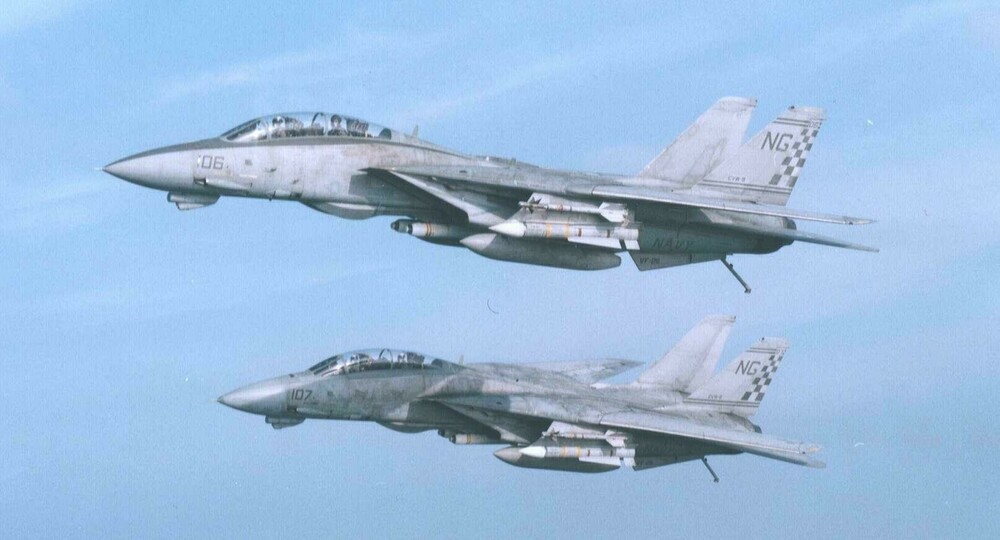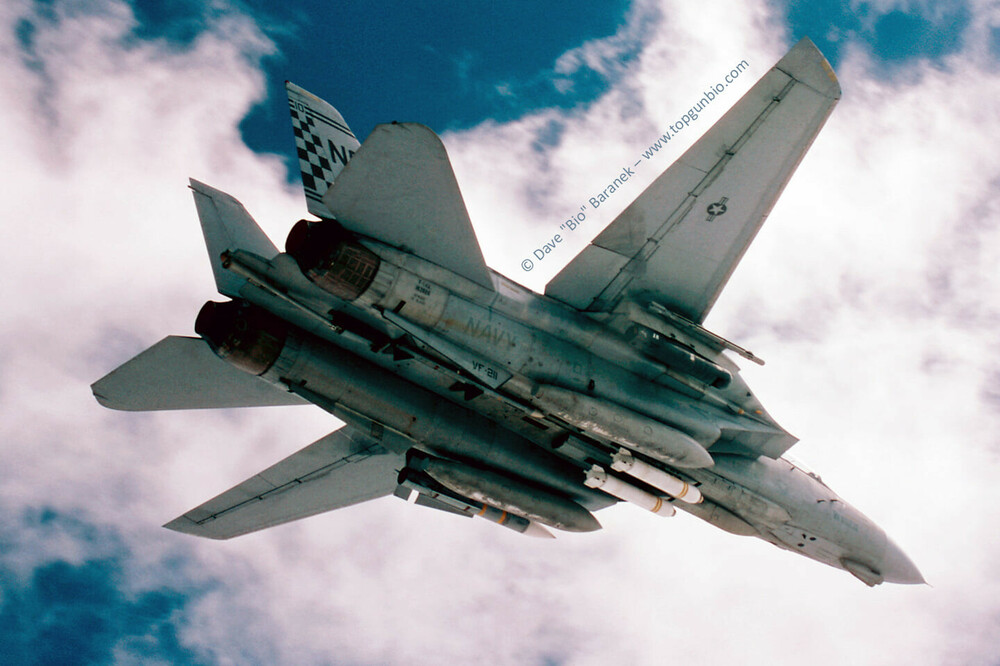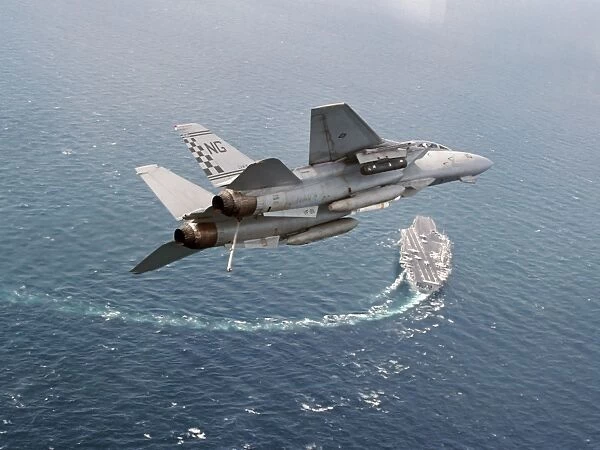

Noctrach
Members-
Posts
414 -
Joined
-
Last visited
Recent Profile Visitors
The recent visitors block is disabled and is not being shown to other users.
-

If I not take chaff on the start, flare not will active.
Noctrach replied to Mosencev's topic in Bugs and Problems
To be fair, after deep-diving into the Viggen I've noticed the KB pod doesn't really match what's described in the manual. For starters, by default it contains 72 flares and 72 chaff. In-game, mode A doesn't seem to work at all and Quick Release will deploy 1 chaff and 1 flare every 2 seconds. Touching the chaff/flare slider has the following effects: It adjusts the amount of chaff and flares to equal the lowest of the two sliders. That means you can have a maximum of 140 chaff and 140 flares, but setting either to 0 means you carry nothing in the pod. (This is what OP noticed) It also controls the rate at which countermeasures are dispensed. For flares this appears to be at a rate of (72 * 2s) / #flares. Not sure about chaff yet, but it scales seemingly inversely. The more chaff you carry the slower it's dispensed. It's all rather confusing. ------------- On the flip-side. Being able to control the rate at which flares deploy means the pod went from "borderline useless in DCS" to "actually really great". So if this gets fixed, please Heatblur, let us keep the ability to increase the rate of flare deployment. I don't mind only carrying 36 flares, but one flare every 2 second provides absolutely negligible protection to IR threats as they're simulated in DCS. (The F-14 flare program has the same issue, but there at least the pilot can take control.) This really is one of those few instances where usability in the sim environment should overrule realism imo. I really don't mind burning all my countermeasures in a single strike pass if it means I have an actual chance at decoying MANPADS... I don't intend to stick around anyway. -

HB needs to fix the TF-30 sound for the F-14A
Noctrach replied to DarkJedi_7's topic in DCS: F-14A & B
Maybe change the title to "I personally prefer the TF-30s to sound more like it does on the Youtube", which is fine and fair. Then others can look at it and go: "Yo man, power to you, nice job on the audio re-tune, but I prefer to go with the guys that have high quality archive audio of the real jet." Just seems like a more pleasant basis for interaction to me, idk. -
I also use VoiceAttack to mitigate the menu, but you still need to pause a little between commands to get the software to parse it. As an example, just asking him to scan at altitude and change azimuth takes about 3 seconds worth of voice commands, then Jester takes 6-7 seconds to actually execute. On average, that is 10 seconds of your engagement time just spent pointing your radar at the right piece of sky. In this time the bandit has already closed another 2-5 miles, depending on geometry. Then you have to wait for AWG-9 to pick up the tracks (DDD will have had multiple hits already), then you have to wait for Jester to hook/lock them, then you have to wait for IFF. By now we've closed 8 miles and counting. As a RIO (or single-seat pilot), I'd already be sending missiles. There's just no comparison. It's perfectly fine if you're just slinging Phoenixes at range and disengaging, but inside 25 miles, it's almost better to just rely on PAL. Whereas in multi-crew, this is where a good RIO really shines. By the time Pulse Search loses value, pilot should be visual for VSL. I'm not saying it's impossible to fly with Jester, but it severely limits your employment envelope and feels pretty fiddly imo. This one I'll definitely give him. He's way better at identifying ambiguous pixel blobs than I can ever dream to be. True and true, he's a blessing and a curse
-
I wouldn't consider them bugs. A lot of the not-seeing-targets and losing lock aspects are just down to the AWG-9 (especially with a little online latency). It's an old radar that needs a lot of babysitting, which, unfortunately, Jester doesn't do at all. As someone who primarily flies RIO seat, I can tell you that the AWG-9 becomes an entirely different beast when you manage your contacts. For instance, if you flag everything you're not launching on as "Do not attack", it stop trying to keep everything it sees in the scan volume, resulting in massively enhanced track stability. Jester has no ability to do this, or similar pro-active tasks. Second part is that 60% of the AWG-9 magic happens in the DDD (pulse mode, blessed pulse mode...), which Jester nor pilot can access. So unfortunately, flying with Jester means you're flying at slightly less than half of the system's capability. The only true gripe I have with Jester is how slow he is at doing the things he can actually do. From punching in frequencies to modulating the radar takes him a good couple precious seconds more than acceptable in the heat of a BVR engagement. Combined with the time spent navigating his somewhat clunky interface... well, I very much avoid going inside 20 miles as a solo Tomcat if I can at all avoid it. In the time it takes for me navigate the menu and for him to set an elevation, I could've done the math on the elevation angle, slewed the radar, locked the bandit and launched a missile. As I take it, JESTER 2.0 is aimed to solve a good part of all this. However, it's also just the limitations of an "AI" in the backseat.
-
Its the lovely irony of PvP environments... People don't wan't to fly F-14 on modern because the 54 is just outclassed by the 120 and to an extent the 77. Simultaneously nobody is allowed to fly it with Phoenixes on the weird community canon of what cold war is, because the jet and weapons outclass almost everything flying there. (All of which occupied the same timeframe as our F-14A) Might be the problem is not with the plane or its missiles... On topic of the missile. The AIM-54A seems to have really cool motor ignition audio right now, I couldnt hear it on the AIM-54C. Is this intended or bug/WIP?
- 1418 replies
-
- 14
-

-
Thanks a lot for the detailed responses guys very insightful! That's exactly what I was sorta expecting to find, old motors with new seekers. Couldn't find any photos of them though. Good stuff! One of the advantages of non-DRM campaigns I can fly these with the F-14A and "realistic"/personalized loadouts if I want to. Not super fond of 2/2/4 outside of BARCAP...
-
In all the campaigns that come with the F-14B (Cage The Bear, Reforger I and II), the jets are equipped by default with AIM-54A, mostly Mk60 types. I take it this is done from a gameplay perspective, but as the missions are set in 1990s and beyond, it gave me a bit of a shower thought: How was the rollout of the AIM-54C handled in real life? Bit of a pedantic question, I know, but still curious. All shots I see from Desert Storm and later are of Tomcats equipped with the 54C model. Since the missile was only fired all of 3 times in anger, I'm curious what happened with "older stocks". Considering the seeker tech was such a massive leap over the -A, was the earlier version still kept around in operational capacity or were they rendered obsolete/relegated to the shooting range with the introduction of the -C?
-

reported earlier AIM-120 cannot hit target doing barrel roll
Noctrach replied to Noctrach's topic in Weapon Bugs
Super, thanks -
As per post. This has been discussed before but AIM-120s still cannot hit a target doing a lazy barrel roll. Pk against such a target is below 0.05. The missile appears to be setting PIP on target lift vector meaning a barrel roll will cause it to start arcing through the sky. Slower rolls are more effective than faster rolls, higher G is more effective as well, but ~5G is more than sufficient all the way down to about 10,000 feet. You can see this happening on TacView, where missile seeker will start following lift vector motion, rather than target motion. No jamming, no chaff, only control inputs. Tracks attached. BarrelRoll1.trk Barrelroll2.trk
-
Thanks guys, after some more searching I found this video from a couple months ago on Bio's youtube channel, showing they indeed had the PTID in the back. (loud warning) Interesting view of the old-school AWG-9 radar symbology overlaid on the LANTIRN picture With respect to the clusters, I found a couple more snippet that all pointed to the LANTIRN being purely used for attaining and communicating the target picture. Nothing very conclusive but it does appear they just used them to set up for a manual drop or for talk-on/buddy lasing for other strikers.
-
If you look up images from VF-211 at Southern Watch you will consistently see the following configuration: + Now I'm curious about two things: These are all F-14As. Does anyone know what the RIO seat looked like for these guys? Were they fishbowls or did they get the PTID/digital bus like the B's? Would the LANTIRN provide targeting in this configuration? Iirc in DCS it only provides cues when selecting a GBUs on the armament panel.
-

reported internally R-3R is not giving launch warnings to its target
Noctrach replied to Sarowa's topic in Weapon Bugs
Just for sake of the fact that this is a game: Doesn't it make a lot more sense, in the absence of other evidence, that the R-3R isn't the one singular exception to the rule? That way we wouldn't have to go in all the headache-inducing thoughts that the other assumption implies, like what would happen if two fishbeds both fire R-3Rs at different targets, or what happens if there's other radar activity in the same wavelength band, etc. Just seems to make more sense to me that you'd hazard on the side of consistency? Especially if, y'know, the module developer has acknowledged it as a bug? Then at least everything works according to the same set of principles. See also: literally any other EW debate wrt sim environments. -
Both the Eagle and the Hornet were also infinitely cheaper to maintain and upgrade... The Tomcat was never a very good value proposition, costing ~38 million per airplane in 1980, which, adjusted for inflation, is ~140 million USD in 2023. That is literally the price of a Raptor. It was "a necessary evil" in a time that promised a real risk of your entire strike fleet being sunk by long distance cruise missiles. When that threat went away ... well the Hornet offers you nearly twice the number of planes/parts for the same money. Edit: A shower thought occurred while writing this... The Tomcat and the Raptor share a remarkable similarity Insanely expensive "super-planes" designed to counter a threat that would never quite manifest, causing them to go obsolete before ever flying the mission they were designed for, replaced by a cheaper jack-of-all-trades cousin using more mature implementations of the technology they pioneered. At least the Tomcat-D had its moment of fame as a precision strike/FAC(A) aircraf, I wonder if the Raptor will turn up in a bomber role someday... "Yessir, I know those externally mounted GBUs will have the RCS of a shiny metal barn door, but at least we get to use the plane for a little longer?"
-
With helmet mounted sight: Mark (7) --> HUD --> TMS up long to slave to JHMCS --> aim with HMS --> TMS up short to stabilize --> refine with TDC --> TMS up short to confirm --> MSel (0) to activate Without helmet mounted sight: Steer aircraft to capture area in HUD --> Mark (7) --> HUD --> position box with TDC --> TMS up short to stabilize --> refine with TDC --> TMS up short to confirm --> MSel (0) to activate In both cases use cursor zero (CZ) to remove any previous slewing offsets. You can also fly an offset and use the ground radar to quickly slew your SPI to near the target area, then refine with TGP. (Then drop a markpoint with TGP)
-
Yep, and without judging on "clunkiness" of the A2G workflow. It clearly worked well enough that the F-16A and C types flew over 13,000 missions in desert storm. OCA, STRIKE, CAS, SEAD/DEAD... all before the modern tape upgrades. Stick with it, do some basic preplanning, understand the waypoint/markpoint flow and it becomes an extremely versatile swiss army knife.



